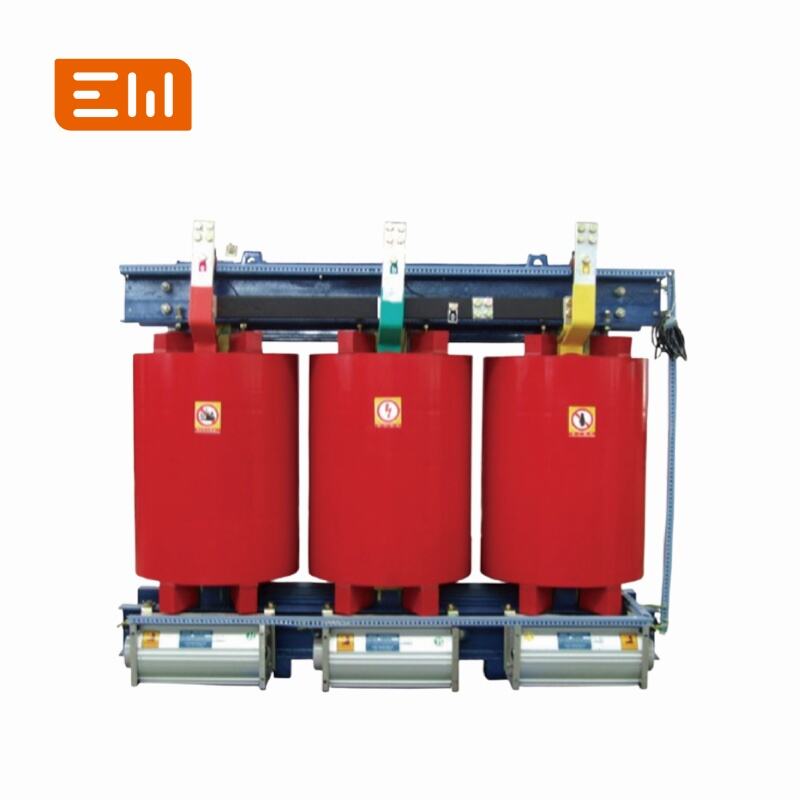Understanding Dry Type Transformer Efficiency and Losses
When selecting a dry type transformer, the initial purchase price is only part of the story. The true cost of a transformer includes its operational cost over decades of service, and that is largely determined by its efficiency. A more efficient transformer wastes less energy, leading to significant financial savings and a smaller environmental footprint.
This guide explains the two main types of transformer losses and how they impact overall efficiency.
What is Transformer Efficiency?
Transformer efficiency is the ratio of the output power delivered to the load to the input power drawn from the source. The difference between the input and output power is the energy "lost," primarily as heat. Efficiency is typically expressed as a percentage.
Efficiency (%) = (Output Power / Input Power) x 100
Even the most efficient transformers are not 100% efficient. Understanding the sources of these losses is key to choosing the right model for your application.

The Two Types of Transformer Losses
1. No-Load Losses (Core Losses)
No-load losses are the energy required to magnetize the transformer's core. They occur whenever the transformer is energized, even if there is no load connected to the secondary side. These losses are constant and are present 24/7.
- Source: Caused by the alternating magnetic field in the core material (hysteresis and eddy current losses).
- When it Matters Most: In applications where the transformer is lightly loaded for long periods (e.g., office buildings at night, schools on weekends). In these cases, no-load losses can account for a significant portion of the total energy consumed.
How to Minimize No-Load Losses
The key is the core material. Transformers built with an amorphous metal alloy core, like the https://www.enweielectric.com/products/transformers/dry-type-transformers/scbh15-three-phase-dry-type-transformer">Enwei Electric SCBH15 series, have significantly lower no-load losses than traditional silicon steel cores. This makes them an exceptionally energy-efficient choice for applications with variable loads.
2. Load Losses (Winding or I²R Losses)
Load losses are generated by the electrical resistance of the primary and secondary windings. They are directly proportional to the load current and increase with the square of the current (I²R).
- Source: Heat generated from current flowing through the copper or aluminum windings.
- When it Matters Most: In applications where the transformer runs at or near its full capacity for long periods (e.g., a factory running 24/7, a fully utilized data center).
How to Minimize Load Losses
Load losses are minimized through careful engineering, such as using properly sized conductors with high conductivity and optimizing the winding design to reduce stray losses.
Finding the Point of Maximum Efficiency
A transformer achieves its maximum efficiency at the load point where the **no-load losses are equal to the load losses**. A transformer designed for a data center (high constant load) will have its peak efficiency near 100% load. In contrast, a transformer for a commercial office building might be designed for peak efficiency at 50-60% load, where it operates most of the time.
Why Efficiency Matters More Than Ever
- Financial Savings: A 1% improvement in efficiency on a large, continuously operating transformer can translate into thousands of dollars in saved electricity costs over its lifespan.
- Environmental Impact: Wasted energy means more fuel burned at the power plant and higher carbon emissions. Choosing an efficient transformer is a direct contribution to sustainability.
- Reduced Heat Load: A more efficient transformer generates less waste heat. In air-conditioned spaces like data centers, this also reduces the load on the cooling systems, creating a secondary source of energy savings.
Conclusion: Look Beyond the Initial Cost
When specifying a dry type transformer, it is crucial to consider its efficiency profile, not just its initial purchase price. Analyze your facility's load patterns to determine whether minimizing no-load losses or load losses is more critical. Investing in a higher-efficiency model, such as an amorphous core transformer for variable loads, often provides a rapid return on investment through reduced energy bills.
The experts at https://www.enweielectric.com/contact-us">Enwei Electric can help you perform a total cost of ownership analysis to select the most economically and environmentally sound transformer for your project. Browse our range of high-efficiency https://www.enweielectric.com/products/transformers/dry-type-transformers">dry type transformers today.

